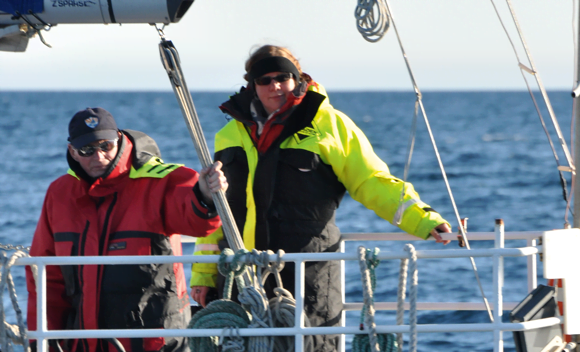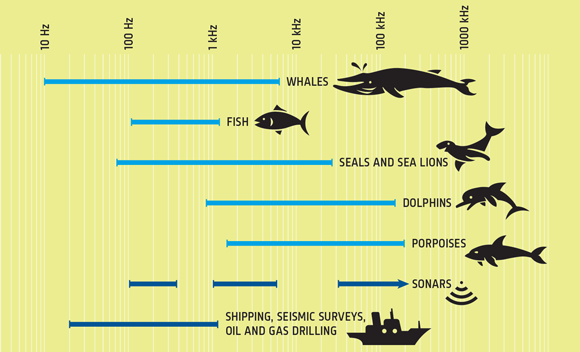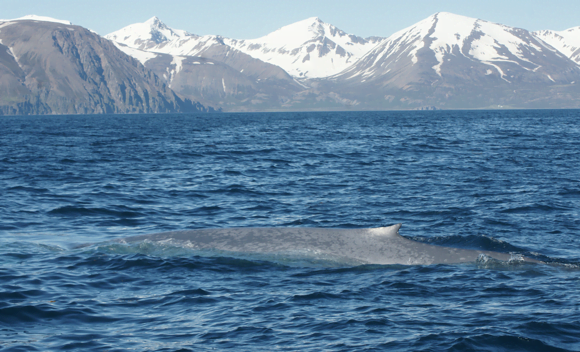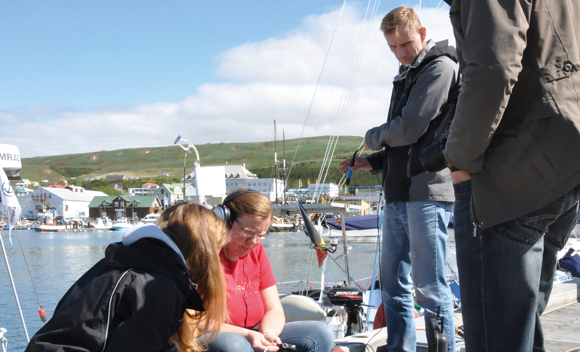Project Blue whale is a research project dedicated to gain knowledge about blue whales in the Northeast Atlantic Ocean. Lately, and thanks to the efforts of Dr Marianne Helene Rasmussen and her team, the research team have begun to understand more about how, why and when these majestic animals communicate and what can be done to ensure that they survive, as ship noise threatens their habitat.
Ocean Noise Pollution
Blue whales (Balaenoptera musculus) are a peaceful species that live in many of the world’s major oceans such as the Antarctic, Atlantic, Indian and the Pacific. However, populations have become scarce and fragmented, due partly to the mass whaling that occurred in the 17th – 20th centuries on one hand, and to more recent disturbances to their natural habitat on the other.
Unfortunately, this is the same frequency range as a wide variety of man-made sounds, such as ship engines, low-frequency active sonar, seismic air gun array explorations and other oil exploration activities, to name but a few.
The question this leads to is, what effect does noise pollution have on these highly intelligent animals?
Shipping Noise: A Loud and Serious Threat
By nature, blue whales are solitary creatures, often travelling thousands of miles alone or in small groups during migration. They are, however, in regular contact with each other but sadly, there is growing evidence that noise interference can disturb their vital life functions, such as feeding, breeding,
navigation and communication.
Shipping noise is a very serious problem, especially for an endangered species.
To make matters worse, worldwide shipping traffic in sea areas used by blue whales is also on the rise. For example, during the Arctic Circle conference in Reykjavik in September 2013 and October 2014 it was stated that 60 ships had gone through the Northwest Passage in the summer of 2013, with plans for several more shipping routes already in process.
Furthermore, whale watching has become a popular tourist attraction, which has led to an increase in the number of vessels in areas where blue whales congregate.
Because of the widespread nature of anthropogenic activities (for example, shipping noise) masking may be one of the most extensive and significant effects on the acoustic communication of marine organisms today.
Masking has the greatest impact on animals when the noise is at frequencies similar to those of biologically important signals.
(Sources: www.dosits.org, Convention on Biological Diversity, Slabbekoorn et al. (Trends in Ecology and Evolution, June 2010).
The result is inevitable; more ships mean more underwater noise. To manage and mitigate risks to whales’ survival, it is vital to gain a better understanding of how, why and where blue whales communicate as well as the level and effect of noise disturbance from ship engines.
Project Blue Whale
This issue was duly noted by the Húsavík Research Center at the University of Iceland, a leading authority in the study of marine mammals. The centre is led by Dr Marianne Helene Rasmussen, who is the driving force behind ‘Project Blue Whale’ – a research initiative to get baseline data on ambient noise levels, the communication of blue whales and to study the effect that masking this low-frequency sound has on them.

Dr Marianne Helene Rasmussen
As the director of the Húsavík Research Centre at the University of Iceland, a leading centre of excellence for marine biology and the study of marine mammals, Dr. Marianne Helene Rasmussen knows a thing or two about whales.
Marianne started her marine mammal studies in Iceland for her Masters' project before completing a Ph.D. on acoustic communication in white-beaked dolphins at the University of Southern Denmark in 2004. Since then, she has been involved in research projects worldwide that have revealed groundbreaking insights into the nature of humpback whales, blue whales, minke whales, killer whales, narwhals, and porpoises.
The project has been financed by the Institute for Terrestrial and Aquatic Wildlife Research (ITAW) at the University of Veterinary Medicine Hannover, Foundation in Germany. The German university had intended to do a similar project on blue whales in the Antarctic but technical problems had meant that they were unable to continue.
Instead, they were happy to support Dr. Rasmussen’s efforts, as she could provide the same or better results in Iceland at far less cost.
Understanding The Blue Whale Communication
The objectives for Project Blue Whale fell into two parts. Firstly, the project aimed to gain a better understanding of the blue whale’s communication patterns. This would require the localization of individual blue whales and the recording of what sounds they were making at what times.
This would help to answer key questions such as whether it was always the same animal calling, what the difference is between animals, and whether they are able to change the frequency of their calls to account for background noise (something other species of whales are able to do).
Secondly, the project would try to find out if and how underwater ship noises affect these communications. This would involve projecting noises at certain frequencies to mask the sounds created by blue whales and investigate their responses.
Balaenoptera Musculus (Blue Whale)
- A healthy adult blue whale can live for 70 – 90 years
- Although the blue whale is called ‘blue’ it is actually a greyish blue (it isn’t until the whale dives under the water that it appears to be a solid blue colour
- The blue whale can eat as many as 40 million krill per day
- It is estimated that as much as 95% to 99% of the entire blue whale population was killed during the whaling era (17th – 20th century)
- Evidence shows that disturbances are having a serious effect on the communication, migration, reproduction and other behavioural patterns of blue whales
- Blue whales are now listed as a protected species
Conducting the Research at the Right Time
Such an endeavour required a large amount of planning. Dr. Rasmussen chose Skjálfandy Bay in Northeast Iceland as the best area to conduct the research; it is easy to get to, close to shore and Iceland’s round-the-clock daylight meant that the research team could go out very early in the morning, long before the whale-watching boats started up their engines.
There is also only a very small four-week window in June when blue whales are typically sighted in the bay (if at all). Blue whales move at their own pace and you can never predict when they will appear or for how long. As such, a two and a half week period was carefully chosen to make the best use of this limited timeframe.
HYDROPHONES
Hydrophones In Marine Research
Fortunately, Dr. Rasmussen has broad experience in marine research using hydrophone arrays to record beam patterns and sound levels, so she was well prepared for the technicalities involved. In 2000, she had been part of a similar project in Andenes in Northern Norway that recorded the sounds made by sperm whales using Type 8101 hydrophones from Brüel & Kjær.
The project had been a great success and so it was a natural decision to use the same equipment again for Project Blue Whale.
Three of the sailing vessels used for the project. Gogo from Iceland, Thoe from Belgium and Roxy from Denmark.
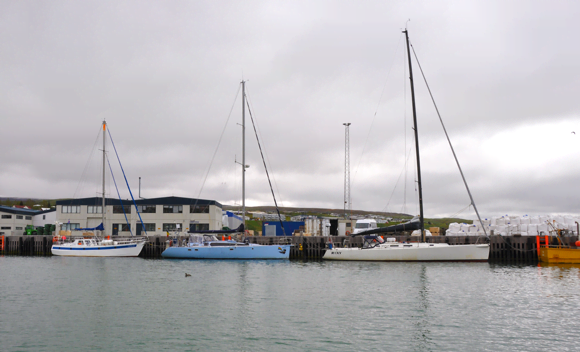
To record the whales, a digital recorder was custom made at Aarhus University and specially configured to be able to capture sound on one channel and to give an accurate GPS signal reading on the other for precise localization data.
Accurate Blue Whale Recordings
With everything ready in good time, 4 boats and 28 people set out at midnight on 19 June 2015 to begin the first recording. The team included Dr. Rasmussen, who was leading the project, and other specialists from the University of Southern Denmark, Odense University in Denmark, University of Veterinary Medicine Hannover, as well as some Ph.D. and Masters students, whale-watcher crews and boat crews.
However, even with the most meticulous planning, the success of the project was still at the mercy of forces beyond anyone’s control. Since 2008, acoustic tagging and photo identification research work had confirmed that blue whales go to Skjálfandy Bay in June but there were no guarantees at all that they would return. It was also essential for the weather to be on their side.
To get accurate recordings, the team needed calm seas and no wind; otherwise, the subsequent waves and ‘cable strumming’ noise from the hydrophone cables would cause additional noise interference that would render the results useless.
The frequencies of interest are as low as 10 – 20 Hz. In order to achieve any bearing (directivity) the distance between the hydrophones must be far enough apart to secure a certain minimum angle.
Using four hydrophones in a large hydrophone array, the distance between the hydrophones was either 1 km or 500 m and they were at a depth of 30 m.
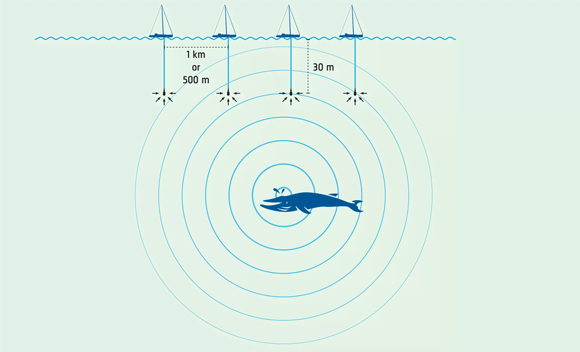
Blue whales communicate via low frequencies (for a 15 Hz signal the wavelength is around 100 m) so a special method was also needed to locate exactly where the whales were. This was achieved using all four boats 500 m or 1 km apart in a line, with the hydrophones at a depth of 30 m.
Then, once a whale was sighted, all that was needed was for the boats to stay in place and record the whale sounds and locations for approximately one hour at a time.
Analyzing the Whale Recordings
Aside from a few days of bad weather and some minor technical glitches, everything went as planned and the team managed to gather over 100 whale calls and a wealth of good positional data. Now, all that is left for this part of the project is to analyze the recordings, which is done onshore and will be completed within the next six months.
Of course, the project doesn’t end there and the second part – examining how ship noises mask and affect the whales’ communication – is still to be done. Nevertheless, the data so far has already revealed some interesting results about the nature of these fascinating sea mammals, how they communicate, what frequencies they use, why, and when.
Hydrophone Type 8106 has a built-in preamplifier which gives a signal suitable for transmission over long cables. It is usable down to 1000 m ocean depth.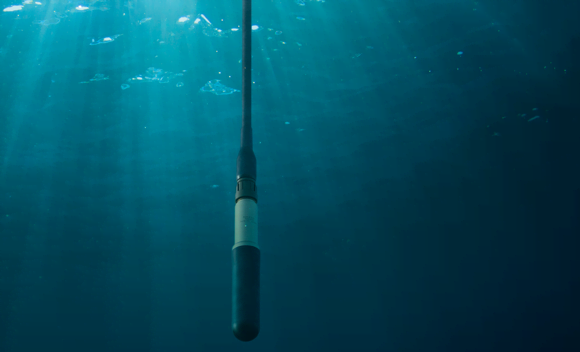
These findings are, in turn, giving rise to a host of new questions, such as whether or not blue whales can change frequencies when calling, if there is any inter-species communication and if this methodology can be used to study other types of whales (for example, the little-studied Baleen whale).
Never one to sit still, Dr Rasmussen is already planning to apply for financial backing for a range of other projects next year to look more closely into these and other areas. For a project like this to have gone so smoothly so far, with so many extraneous variables to manage and overcome, is a huge achievement.
Now, thanks to Dr. Rasmussen and her tireless team, we are not only forming a far deeper understanding of blue whales but, these results will be a catalyst for a new dialogue with authorities about shipping lane regulations, and what else can be done to safeguard the whales’ natural habitat.
And if all this leads to more and better ways of protecting this enormous, endangered, and enigmatic sea creature, then this is the best possible result for us all.
Listen to the Blue Whale Recordings
Infrasonic calls
Non-song communicative calls
Distinctive song of the blue whale (California)
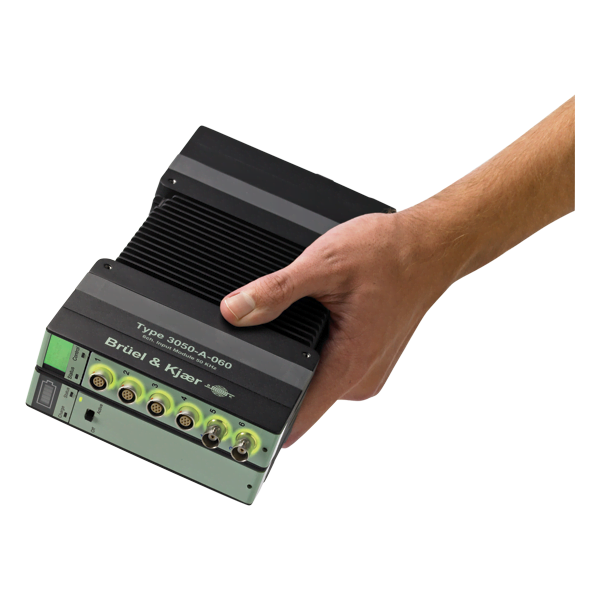
Underwater Sound Recordings
LAN-XI NOTAR
The Brüel & Kjær NOTAR recorder allows underwater sound recording for hours at a time – even without the need of a laptop.
NOTAR is a small and rugged solid-state recorder that has no shock-sensitive moving parts (unlike tape recorders or PC hard drives) which means it can be used in locations where no PC-based recorder can operate.


